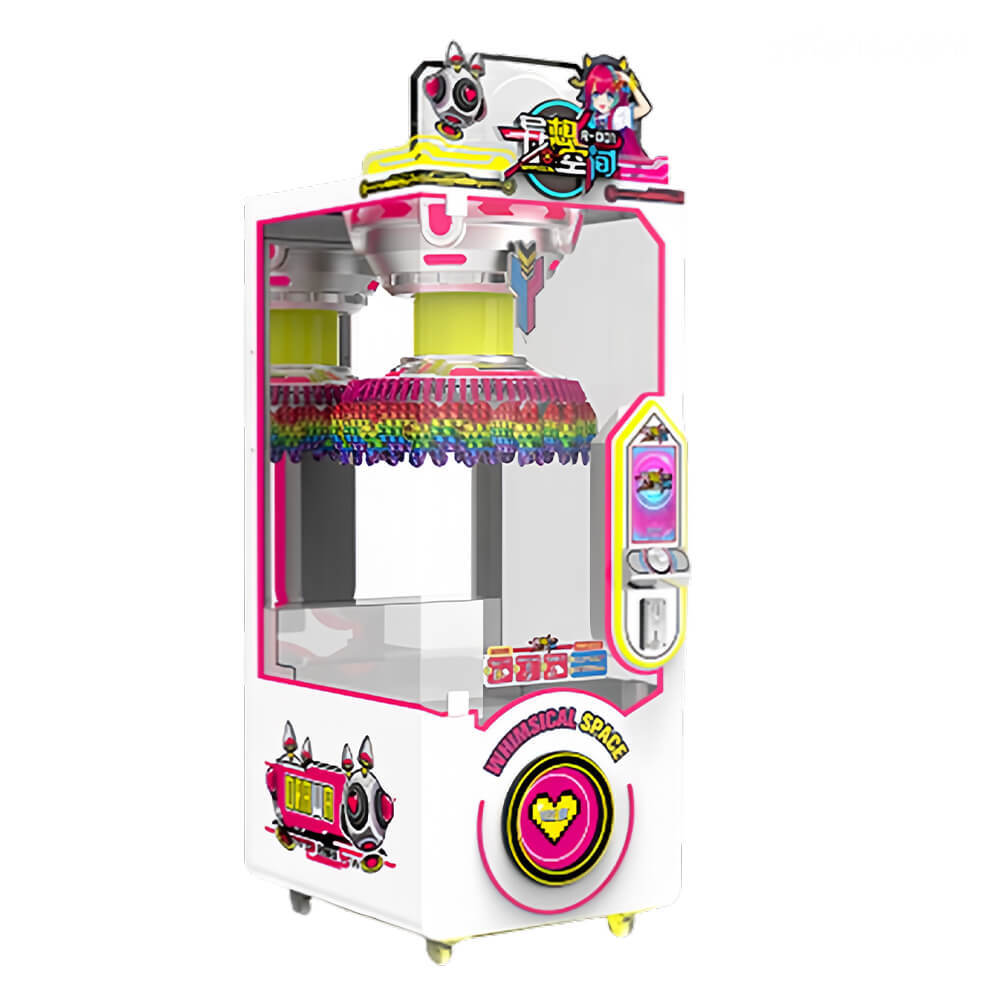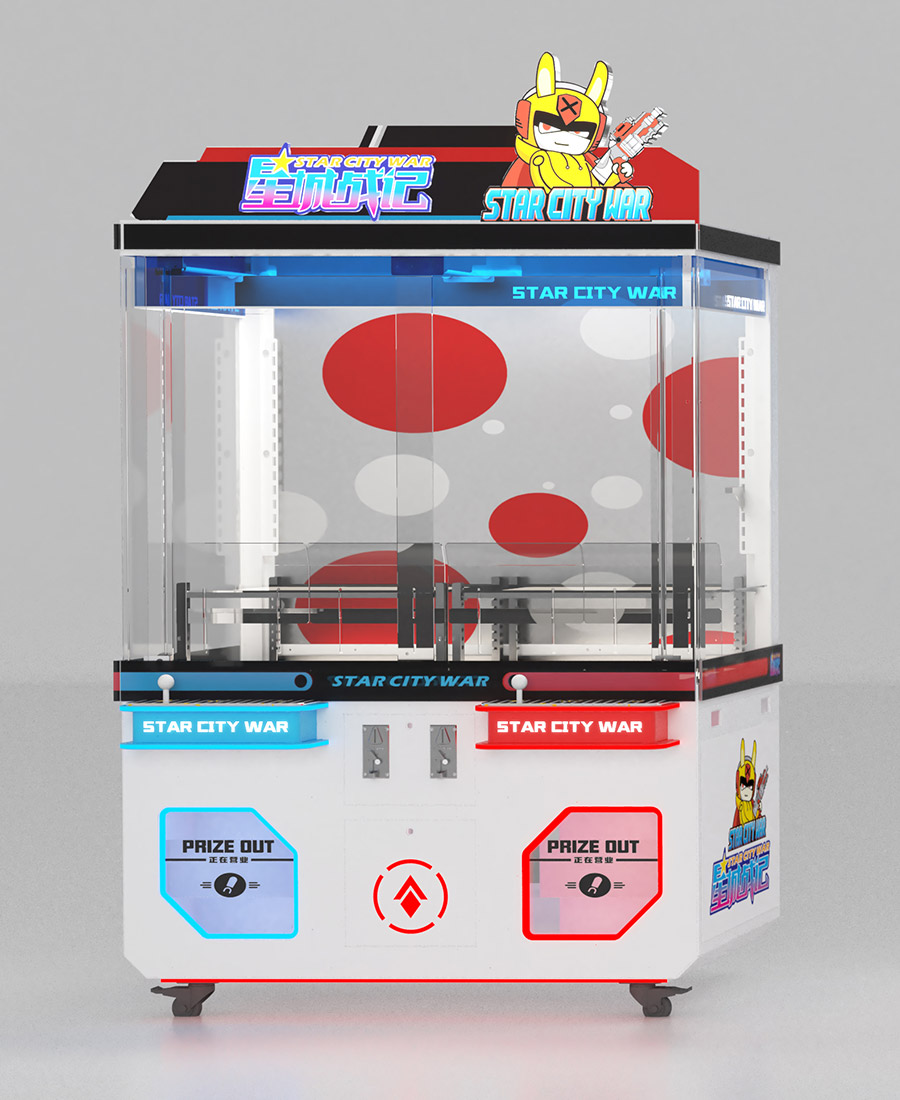How Does a Claw Machine Work?
A
claw machine is a mechanical and electronic device that is used to pick up and drop prizes in a game. The main mechanism of the machine is a motorized claw that slides from left to right and up and down over a range of toys. The claw is controlled through two joysticks to maneuver the claw above the desired item that a player wishes to win. After the player has pressed the button to drop the claw, it goes down and tries to catch a prize. However, the strength of the claw is frequently regulated by a random number generator (RNG), which decides when the claw will possess enough force to lift a prize. This means the payout of the machine is predetermined; the claw rarely has a strong grip most of the time, only to become strong enough to hold a prize at certain intervals for the operator’s cut.
Is Claw Machine Luck or Skill?
With regard to
claw machines, players argue on whether or not the game entails an element of skill. The truth is that both factors exist, but luck normally takes precedence over the other. Of course, a player can aim and time the claw’s drop perfectly to increase his or her chances of success; however, the internal mechanism plays a major role in this game. Most claw machines today have a random number generator (RNG) that determines when the claw will scoop a prize with maximum force; therefore, the odds are set in advance and depend on the machine’s payback schedule. Skill may come in handy in placing the claw, but the success of a player depends on the payout percentage set by the machine, which is more of luck.
What is the Payout Rate of Claw Machines?
The payout rate of claw machines is the number of times a particular
claw machine is programmed to pay the player a prize. Unlike other games of chance, claw machines do not have standard payout rates, which are easily available to the public and can differ significantly from one machine to another.
Normally, the payout rate is set by the operator and can be changed based on the place, condition of the machines, and the types of things inside. For instance, a claw machine in an arcade may be programmed to dispense fewer toys to avoid making a loss, while that in a shopping mall may be set to dispense more toys to entice more players.
Typical Payout Range of Claw Machines
Claw machines typically have a payout of between 10% and 30%, but this will vary depending on several factors. Sometimes the machine is designed to enable the players to win the prize after the specified number of tries have been made. The payout rate is therefore not fixed but rather flexible. Usually, the payout rate for larger prizes will be lower in order to make up for the costs of the game.
Factors Affecting the Payout Rate of Claw Machines
There are some factors that can affect the payout rate of
the claw machine. Some of these are within the control of operators, and they include the frequency of payouts. Knowing these elements can assist you in making better decisions when you stand in front of a claw machine.
Prize Size
The size of the prize that is placed inside the claw machine also contributes to the decision of the payout rate. Games that involve dispensing expensive items like electronics or large stuffed animals have a lower pay-out ratio because the operator needs to ensure that he or she will earn back the cost of the item before dispensing it.
Machine Programming
Many of the claw machines that are currently in use have incorporated a random number generator (RNG) that determines the extent of the claw’s strength to pick up a prize. The RNG is set to allow a successful grab only after a number of tries; even if the claw is placed correctly on the prize, it may not pick it up until the machine hits the ‘winning’ cycle.
Legal Provisions on the Payout Rate of Claw Machines
The payout rate of claw machines is regulated by several legal requirements in many countries to avoid the operation of the machines as unauthorized gambling machines. In some countries, claw machines are legal, and the operators are expected to adhere to certain legal requirements before they can operate, and the pay rates they offer are also regulated. For example, there are jurisdictions that require a minimum payout rate, that is, the machine should pay a player a prize after a certain number of tries or according to a certain percentage. These regulations assist to ensure that the operator earns reasonable profits while at the same time the machines do not turn into gambling.
Conclusion
Claw machines are great for entertainment and a good way to challenge your luck and reflexes, but the odds of winning are set by the machines’ code and the operator. As mentioned above, the odds of winning prizes depend on several factors, although the machines are programmed to provide players with prizes. If you want to have a better shot at winning, then you need to know how these machines operate and what determines the payback percentage.
For players seeking quality, standard, and legal claw machines, YPfuns provides a list of high-end standard custom claw machines for players. Their dedication to integrity and innovation guarantees that the players get a level playing field.
FAQs
Do claw machines count as gambling?
In most cases, claw machines do not count as gambling, as the outcome is largely based on chance, not a player's ability to make a wager. However, in some jurisdictions, claw machines are considered a form of gambling and are subject to specific legal regulations.
While there is no guaranteed trick to winning, skilled players can improve their chances by carefully positioning the claw and timing their drops. However, the payout rate and machine programming ultimately play a significant role in determining whether or not you win.
How Rigged Are Claw Machines?
Claw machines are not necessarily "rigged," but they are programmed to have a low payout rate. Many machines are designed to allow players to win only after a certain number of attempts, and the claw's strength is often reduced to make it more difficult to grab a prize. Understanding these mechanics can help manage expectations.












YPFuns
YPFuns